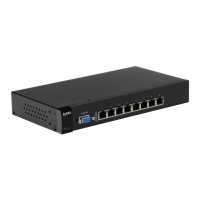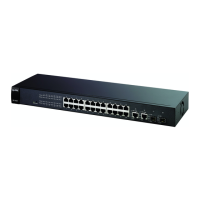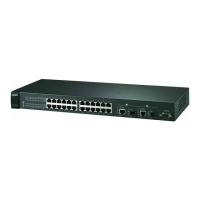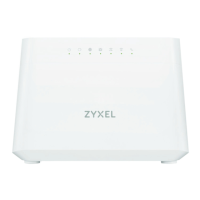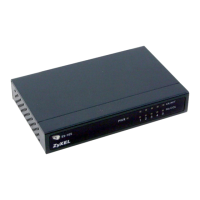Chapter 2 Privilege Level and Command Mode
Ethernet Switch CLI Reference Guide
19
In the following example, the login account user0 has a privilege level of 0 but knows that the
password for privilege level 13 is pswd13. Afterwards, the session’s privilege level is 13,
instead of 0, and the session changes to enable mode.
Users cannot use this command until you create passwords for specific privilege levels. Use
the following command to create passwords for specific privilege levels.
password <password> privilege <0-14>
<password> consists of 1-32 alphanumeric characters. For example, the following
command sets the password for privilege level 13 to pswd13. See Chapter 85 on page 319 for
more information about this command.
2.1.3.3 disable Command
This command reduces the session’s privilege level to 0. It also changes the session to user
mode. This command is available in enable mode.
2.1.3.4 show privilege command
This command displays the session’s current privilege level. This command is available in
user mode or enable mode.
2.2 Command Modes
The CLI is divided into several modes. If a user has enough privilege to run a particular
command, the user has to run the command in the correct mode. The modes that are available
depend on the session’s privilege level.
2.2.1 Command Modes for Privilege Levels 0-12
If the session’s privilege level is 0-12, the user and all of the allowed commands are in user
mode. Users do not have to change modes to run any allowed commands.
sysname> enable 13
Password: pswd13
sysname#
sysname(config)# password pswd13 privilege 13
sysname# show privilege
Current privilege level : 14

